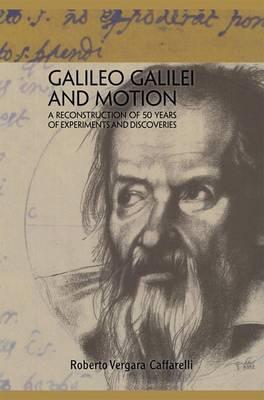Overview
Among the many books on Galileo Galilei only very few deal directly and in depth with his scientific accomplishments proper. This is one of them and among the correspondingly sparse literature the author of this work distinguishes himself by focusing on mechanics, in particular on the fundamental concept of motion and percussion - having performed crucial original experiments and in Galileo´s spirit. Indeed, while the author lets Galilei speak for himself when he explains his experiments and findings, he also makes full use of our present day knowledge of physics to make the reader better understand the perspective. The result of this very fine understanding is an unsurpassingly authoritative account on some of the foundations of preclassical mechanics as laid down by the great Pisan scientist, widely regarded as the first experimental physicist in the modern sense. This book will not only be an indispensable source of reference for historians of sciences but appeal to anyone interested in the foundations of experimental physics in general and of mechanics in particular.
Full Product Details
Author: Roberto Vergara Caffarelli
Publisher: Springer-Verlag Berlin and Heidelberg GmbH & Co. KG
Imprint: Springer-Verlag Berlin and Heidelberg GmbH & Co. K
Edition: 2009 ed.
Dimensions:
Width: 15.50cm
, Height: 1.70cm
, Length: 23.50cm
Weight: 0.474kg
ISBN: 9783642427305
ISBN 10: 3642427308
Pages: 298
Publication Date: 21 November 2014
Audience:
Professional and scholarly
,
Professional & Vocational
Format: Paperback
Publisher's Status: Active
Availability: Manufactured on demand

We will order this item for you from a manufactured on demand supplier.
Reviews
From the reviews: The book is remarkable: In it, Caffarelli, proceeding chronologically, plausibly re-creates and expounds on the sequence of experimental studies that led Galileo to discover the law of falling bodies. book contains interesting pictures of Caffarelli s reconstructed floating-body apparatuses and duplications of Galileo s inclined planes, which, in Caffarelli s view, eventually led Galileo to formulate his epoch-making theories of motion. (Paolo Palmieri, Physics Today, November, 2010) The book presents a well-described example of the human progress due to transformation the knowledge about physical motion from daily observation and logical reasoning to measurement and calculation. A piece of investigation of great value to anyone who is not indifferent to the problem of origins and becoming of modern theory of motion. The book may be also helpful for lecturing in the fields of mechanics and mathematics. (Vladimir Evgenievich Puzyrev, Zentralblatt MATH, Vol. 1196, 2010)
From the reviews: The book is remarkable: In it, Caffarelli, proceeding chronologically, plausibly re-creates and expounds on the sequence of experimental studies that led Galileo to discover the law of falling bodies. ... book contains interesting pictures of Caffarelli's reconstructed floating-body apparatuses and duplications of Galileo's inclined planes, which, in Caffarelli's view, eventually led Galileo to formulate his epoch-making theories of motion. (Paolo Palmieri, Physics Today, November, 2010) The book presents a well-described example of the human progress due to transformation the knowledge about physical motion from daily observation and `logical reasoning' to measurement and calculation. A piece of investigation of great value to anyone who is not indifferent to the problem of origins and becoming of modern theory of motion. The book may be also helpful for lecturing in the fields of mechanics and mathematics. --- (Vladimir Evgenievich Puzyrev, Zentralblatt MATH, Vol. 1196, 2010)
From the reviews: The book is remarkable: In it, Caffarelli, proceeding chronologically, plausibly re-creates and expounds on the sequence of experimental studies that led Galileo to discover the law of falling bodies. ... book contains interesting pictures of Caffarelli's reconstructed floating-body apparatuses and duplications of Galileo's inclined planes, which, in Caffarelli's view, eventually led Galileo to formulate his epoch-making theories of motion. (Paolo Palmieri, Physics Today, November, 2010) The book presents a well-described example of the human progress due to transformation the knowledge about physical motion from daily observation and 'logical reasoning' to measurement and calculation. A piece of investigation of great value to anyone who is not indifferent to the problem of origins and becoming of modern theory of motion. The book may be also helpful for lecturing in the fields of mechanics and mathematics. --- (Vladimir Evgenievich Puzyrev, Zentralblatt MATH, Vol. 1196, 2010)
From the reviews: The book is remarkable: In it, Caffarelli, proceeding chronologically, plausibly re-creates and expounds on the sequence of experimental studies that led Galileo to discover the law of falling bodies. ... book contains interesting pictures of Caffarelli's reconstructed floating-body apparatuses and duplications of Galileo's inclined planes, which, in Caffarelli's view, eventually led Galileo to formulate his epoch-making theories of motion. (Paolo Palmieri, Physics Today, November, 2010) The book presents a well-described example of the human progress due to transformation the knowledge about physical motion from daily observation and 'logical reasoning' to measurement and calculation. A piece of investigation of great value to anyone who is not indifferent to the problem of origins and becoming of modern theory of motion. The book may be also helpful for lecturing in the fields of mechanics and mathematics. (Vladimir Evgenievich Puzyrev, Zentralblatt MATH, Vol. 1196, 2010)




